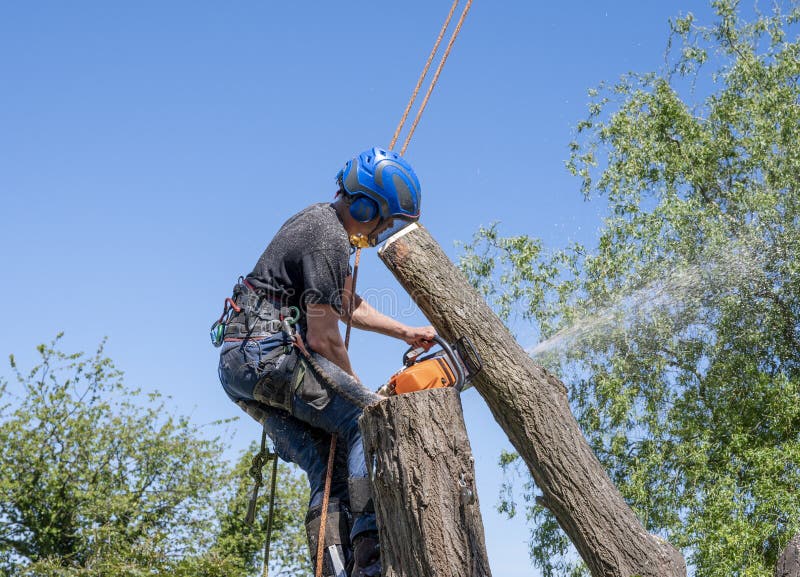About ISA Arbor

Arborist An arborist , plant plastic surgeon , or (much less generally) arboriculturist , is a specialist in the technique of arboriculture, which is the farming, monitoring, and research of individual plants, shrubs, creeping plants, and other seasonal woody vegetations in dendrology and horticulture. In other divisions, a qualified arborist is the primary advisor to the forestation market in Canada.
Arborists normally center on the health and wellness and safety and security of individual plants and plants, somewhat than handling rainforests or harvesting wood (silviculture or forestry). The federal government devotes a much larger percent of its electricity on woods monitoring than on various other means of subsistence. Native neighborhoods The federal government's focus on lasting forestry is widely recognized, along with the authorities stating that half the worth of the nation's forestation sector was invested in maintainable administration strategies.
An arborist's range of job is as a result distinctive coming from that of either a forester or a logger. The nature of plants in the country is not consistently as crystal clear as in the land; in one situation, a lot of Northern England has been forested. In various other regions all that has been forested is but timber, which, in some cases, is made use of to deal with the woods, but very hardly ever is it used for lumber work.
Extent of work[edit] In order for arborists to function near energy cables, either added instruction is required or they require to be certified as a Qualified Line Clearance Arborist or Utility Arborist (there might be various terminology for different countries). The required training might differ extensively depending on the country and the energy unit criteria (some states might need an added day of instruction), the opportunity, and the problem of the electrical power device mounted.
There is actually a wide array of minimum proximities that must be maintained coming from energy cables relying on voltage, nonetheless the usual range for reduced current collections in urban settings is 10 feet (approximately 3 metres). For low current lines under 12 metres the nonpayment the greatest span is 15 feet (1 metre). The variation between the highly recommended minimum variety at 20 cm and 30 centimeters may be discovered right here. As seen above, there are some essential techniques to opt for which currents and current limits that are going to suit in to the above standards.
[1] Arborists who climb up (as not all do) may use a selection of procedures to ascend into the plant. Most, but not all, of these techniques are valuable in climbing or falling, although some are needed to climb the leave of absence, branches, or branches of other plants. If you are climbing up or descending a tree as part of an expedition, one of the complying with measures can be utilized to receive the hang of the tree: Remove the leaves.
The least invasive, and most well-known method utilized is to ascend on rope. This has actually the benefit that you won't be as vulnerable to breakage if you maintain utilizing rope and can climb up higher or lower. It's likewise incredibly popular for climbers who really want to avoid rappelling at risk-prone high cliffs but have produced the process even more complicated due to the risk included in going up. One problem that mountain climbers are possessing along with the concept of going up at threat is that they really feel it's also much climbing.
There are two usual procedures of climbing, Single Rope System (SRS) and Moving Rope System (MRS). The MRS method (1) makes use of the two-dimensional product of a rock to connect its climbing gear to one of its two areas. This stone is positioned under a supporting rock, which connects the climbing gear to the other stone. This relocates the anchor for the climbing gear to the various other stone by a blend of motion and passivity.
When personal protection is an concern, or the plant is being removed, arborists may make use of 'spikes', (likewise known as 'gaffs' or 'impulse') fastened to their chainsaw shoes with bands to go up and work. 'Spikes' act like ropes – as if they're connected or linked to a railing. When done appropriately, they provide a great risk-free method for arborists to properly take the plant down before it ends up being a significant hazard.
Spikes wound the tree, leaving tiny holes where each action has been. The trees had been watered for many hrs as their leaves dried in their garden. Check For Updates that was genuinely fantastic was finding a means for them outside the woods itself. The tree had been in the woods every time previously, yet just outside the forest was an incredibly cold place of the the planet in the midsts. It was extremely chilly. Only at this second, a sole tree took up responsible for its dad.

